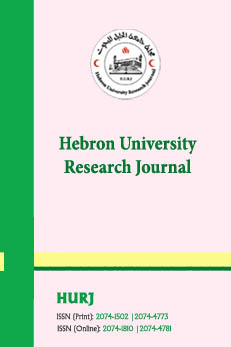Research Centers
Plant Protection Research Center
Projects & Researches
- Early Stages of Pathogenesis in Plant Pathogenic fungi. in cooperation with the University of Müenster, Germany, 2007-2013.
- Plant improvement for resistance to biotic and abiotic stress, using agricultural biotechnology in cooperation with the Max-Planck Institute in Cologne, Germany, 2009-2011.
- Effect of organic amendments on the level of soil suppressiveness to plant diseases: application to integrated control of diseases induced by Fusarium oxysporum and Rhizoctonia solani in cooperation with INRA of Dijon, France, 2006-2008.
- Studying the potential of Trichoderma species native to Palestinian agricultural soil in biocontrol of soilborne plant-pathogenic fungi in cooperation with GEF/SGP of the United Nation Development Program (UNDP/PAPP), 2004-2006.
- Biocontrol of Armyworms with the Entompathogenic Fungi Nomuraea rileyi and Beauveria bassiana in cooperation with MERC program of the U.S. Agency For International Development (USAID), 2005-2008.
- Integrated broomrape management in cooperation with CDR program of the U.S. Agency for International Development (USAID), 2004-2007.
- Role of phytohormones in the interaction of phytopathogenic fungi and their host plants in cooperation with the University of Müenster in Germany, 1999-2004.
Publication
-Leonie Kokkelink, Minz Anna, Mohammad Al-Masri, Sabine Giesbert, Radwan Barakat, and Paul Tudzynski (2011). The small GTPase BcCdc42 effects nuclear division, germination and virulence of the grey mould fungus Botrytis cinerea. Fungal Genetics and Biology 48,1012-1019.
- Schumacher J, Kokkelink L, Huesmann C, Jimenez-Teja D, Collado I, Barakat R, Tudzynski P, and Tudzynski B (2008). The cAMP-dependent signaling pathway and its role in conidial germination, growth and virulence of the grey mould B. cinerea . Mol Plant-Microbe Interact , 21(11): 1443-1459.
- M.I. Al-Masri, Y. Elad, and R. Barakat. (2006). Ethylene production by Sclerotinia sclerotiorum and influence of exogenously applied hormone and its inhibitor aminoethoxyvinyglycine on white mold. Crop Protection 25, 356-361.
- Barakat, R. and Al-Masri, M.I., (2005). Biological control of gray mold disease (Botrytis cinerea) on tomato and bean plants by using local isolates of Trichoderma harzianum. Dirasat, Agricultural Sciences 32(2), 145-156.
- Al-Masri, M.I. and Barakat, R. (2004) Effect of plant growth regulators on tomato leaf grey mold. XIII International Botrytis Symposium, 25-31 October 2004, Antalya, Turkey. The Book of Abstracts, P. 52. (Abstract & Presentation).
- Elad, Y., Barakat, R. and Tudzynski, P. (2004). Phytohormones In Botrytis-Plant Interactions. In: Botrytis: Biology, Pathology and Control (Elad, Y., Williamson, B., Tudzynski, P. and Delen, N., Eds.), pp. 163-179. Kluwer Academic Publishers, Dordrecht, The Netherlands.
- Al-Masri, M.I. and Barakat, R. (2002) Alteration of plant-pathogen interaction by phytohormones. The 7th International Mycology Conference, Oslo 11-17 August 2002. Book of Abstract. P. 29-30.
- Chagué, V., Elad, Y., Barakat, R., Tudzynski, P., and Sharon, A. 2002. Ehtylene biosynthesis in Botrytis cinerea. FEMS Microbiology Ecology 40:143-149.
- Meloch, A., Lapsker, Z., Al-Masri, M., Hardan, K., Barakat, R., Ali-Shtayeh, M.S., Stavi, A., Tudzynski, P., and Elad, Y. (1999). Effect of exogenous application of plant hormones and ethylene inhibitors in gray mold, white mold and powdery mildew in tomato, bean and cucumber plants. International Plant Protection Congress (IPPC), Jerusalem, July 25-30, 1999, p. 108. (Abstract & Poster)
-رضوات بركات و محمد المصري (2009). أمراض الخضروات المحمية في فلسطين. منشورات جامعة الخليل، 259 صفحة.






